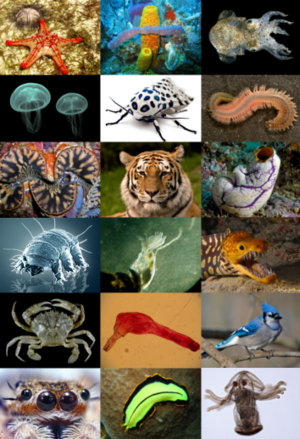Animal

All animals are composed of cells, surrounded by a characteristic extracellular matrix composed of collagen and elastic glycoproteins.[12] During development, the animal extracellular matrix forms a relatively flexible framework upon which cells can move about and be reorganised, making the formation of complex structures possible. This may be calcified, forming structures such as shells, bones, and spicules.[13] In contrast, the cells of other multicellular organisms (primarily algae, plants, and fungi) are held in place by cell walls, and so develop by progressive growth.[14] Animal cells uniquely possess the cell junctions called tight junctions, gap junctions, and desmosomes.[15]
With few exceptions—in particular, the sponges and placozoans—animal bodies are differentiated into tissues.[16] These include muscles, which enable locomotion, and nerve tissues, which transmit signals and coordinate the body. Typically, there is also an internal digestive chamber with either one opening (as in flatworms) or two openings (as in deuterostomes).